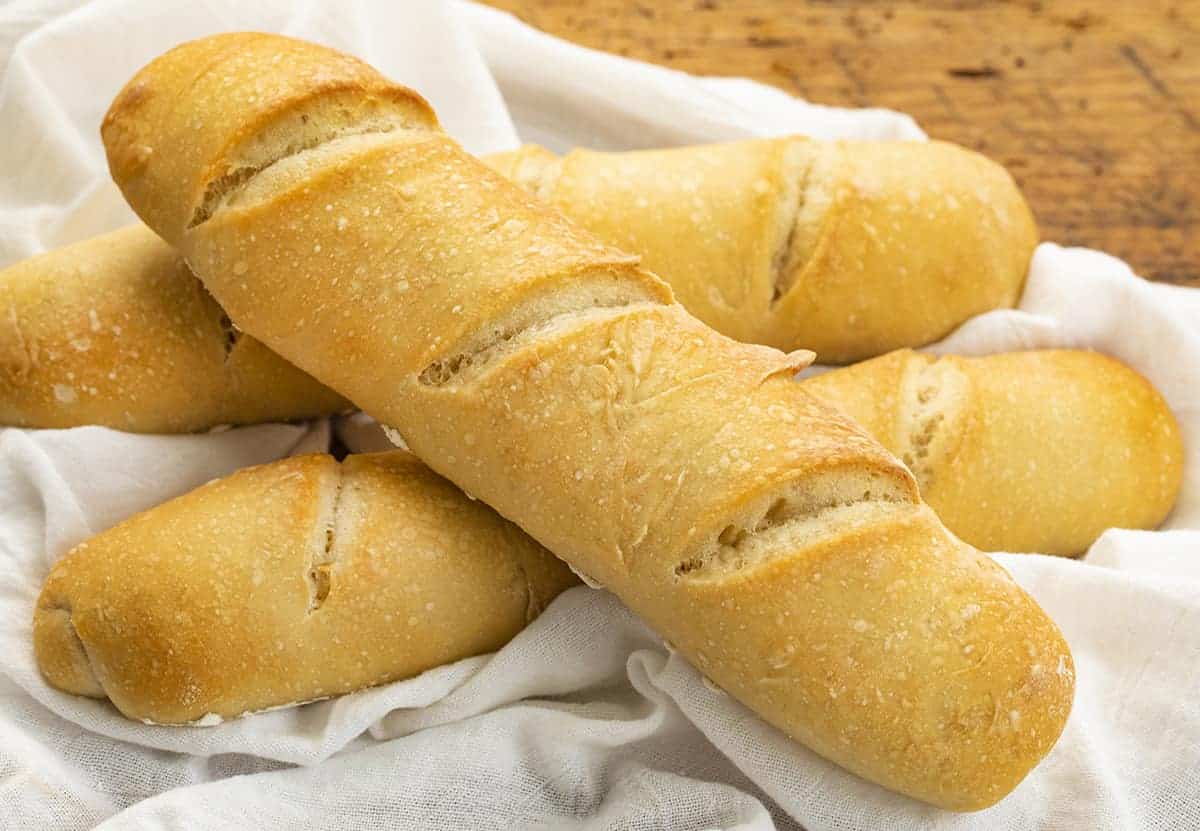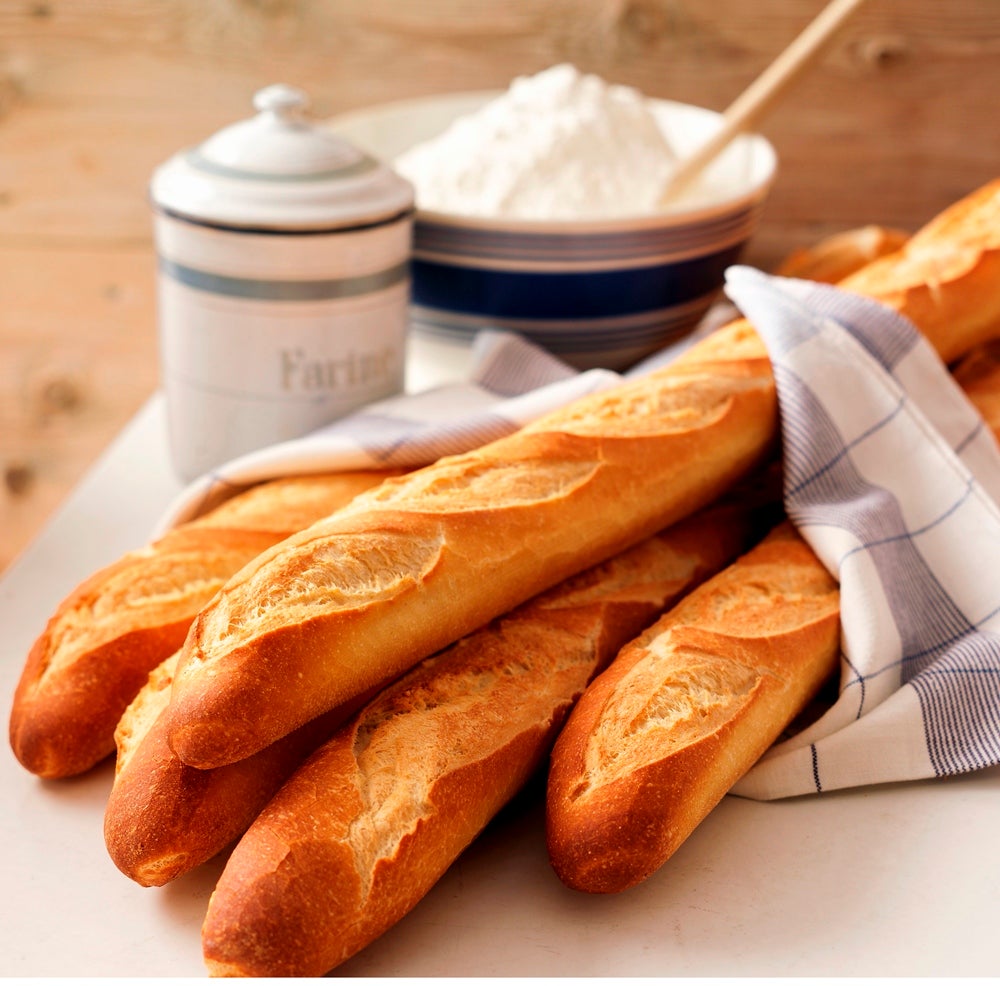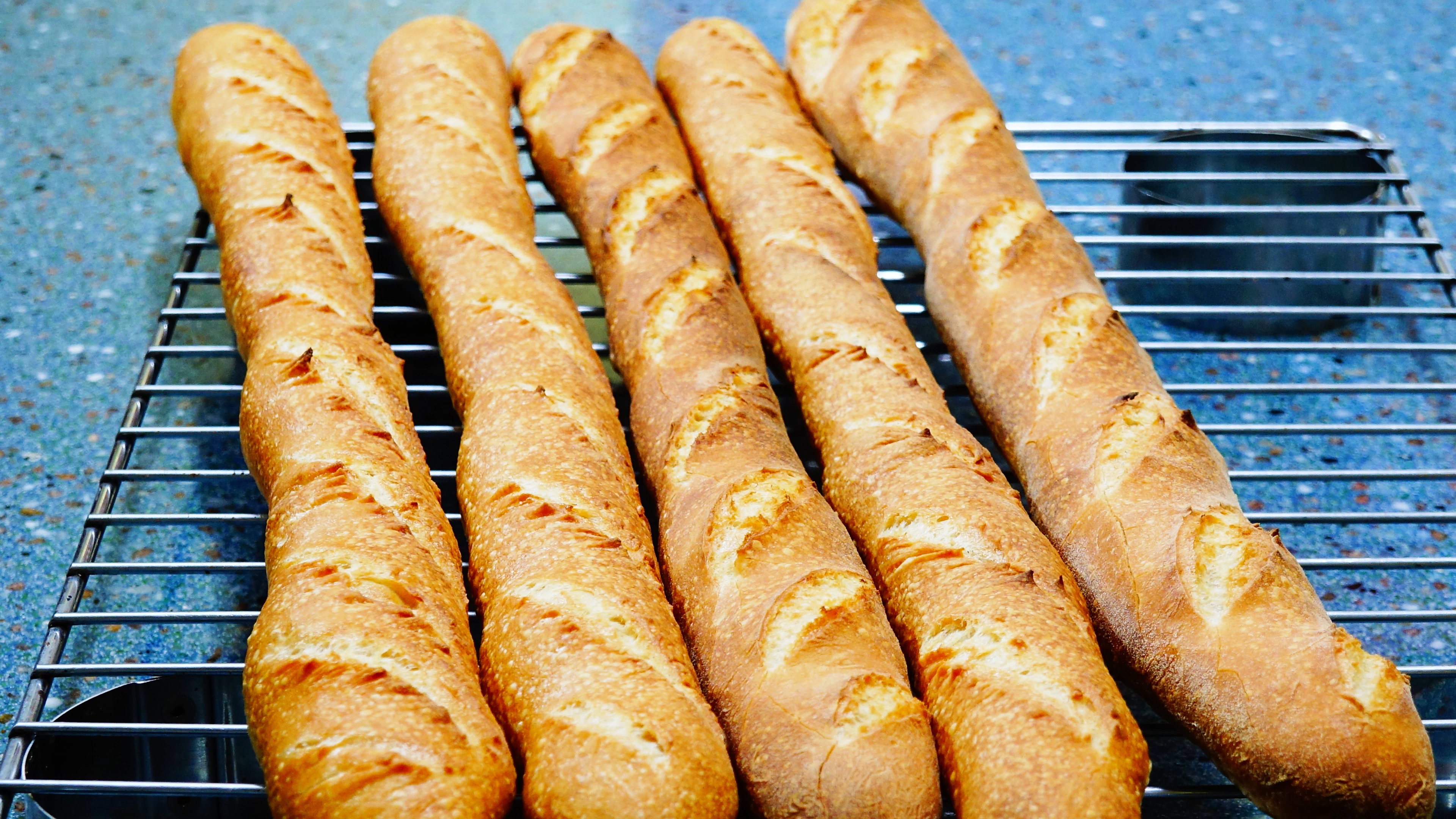On the coronary heart of French gastronomy lies the long-lasting french meals baguette, an emblem of nationwide satisfaction and culinary excellence. Its humble origins and wealthy cultural significance have woven it into the material of French id, making it an indispensable a part of the nation’s delicacies and tradition.
From its distinctive form and crispy crust to its versatility in each conventional and fashionable dishes, the baguette is a culinary masterpiece that has captured the hearts of meals lovers worldwide. Be part of us as we delve into the fascinating world of the french meals baguette, exploring its historic roots, manufacturing course of, culinary makes use of, and world affect.
Historic Origins and Cultural Significance of Baguette

The baguette, an extended, skinny loaf of French bread, holds a cherished place in French historical past and tradition. Its origins could be traced again to the nineteenth century, when bakers in Paris sought to create a bread that may be straightforward to hold and share.
The baguette rapidly gained recognition, changing into a staple of the French weight loss plan and an emblem of nationwide satisfaction.
Social and Cultural Influences
The baguette’s recognition could be attributed to a number of social and cultural elements. Its portability made it preferrred for staff and college students on the go. Its crusty exterior and chewy inside supplied a satisfying consuming expertise. Moreover, the baguette grew to become related to French id and custom, symbolizing the nation’s culinary heritage.
Depictions in Artwork, Literature, and Movie, French meals baguette
The baguette has been immortalized in varied types of artwork, literature, and movie. It has been depicted in work by artists corresponding to Claude Monet and Édouard Manet, in novels by authors corresponding to Marcel Proust and Victor Hugo, and in movies corresponding to “Amélie” and “The French Dispatch.”
These depictions showcase the baguette’s cultural significance and its enduring presence in French society.
Traits and Manufacturing Course of
The baguette is famend for its distinctive traits that set it aside from different bread varieties. Its elongated form, resembling an extended and skinny loaf, is a defining function. The crust of a baguette is usually crisp and golden brown, whereas the crumb is delicate and ethereal with an open texture.
Form and Dimension
The form of a baguette is essential to its id. It’s usually cylindrical and lengthy, with a size starting from 60 to 90 centimeters. The width of a baguette normally measures round 5 to six centimeters, and its top is roughly 3 to 4 centimeters.
Texture
The feel of a baguette is a harmonious mix of a crisp crust and a delicate crumb. The crust is skinny and shatters simply, offering a satisfying crunch with every chew. The crumb, however, is ethereal and open, with a chewy but tender texture.
Taste
The flavour of a baguette is easy but alluring. It has a gentle and barely tangy style, complemented by the nutty and barely candy notes from the toasted crust. The general taste profile is well-balanced and versatile, making it an ideal accompaniment to varied dishes.
Manufacturing Course of
The manufacturing means of a baguette includes a number of meticulous steps that require precision and talent. Here’s a simplified step-by-step information on the way to make a baguette at dwelling:
- Deciding on the Components:The important thing components for making a baguette are flour, water, salt, and yeast. Select high-quality bread flour with a excessive protein content material for optimum gluten growth.
- Mixing the Dough:Mix the flour, water, salt, and yeast in a big bowl. Combine till a dough varieties, then knead it on a evenly floured floor for 10-Quarter-hour till it turns into clean and elastic.
- First Rise:Place the dough in a evenly oiled bowl, cowl it with plastic wrap, and let it rise in a heat place for 1-2 hours, or till it has doubled in dimension.
- Shaping the Baguette:As soon as the dough has risen, divide it into two equal parts. Form every portion into an extended and skinny loaf, roughly 60-90 centimeters lengthy.
- Second Rise:Place the formed baguettes on a baking sheet lined with parchment paper. Cowl them with a humid material and allow them to rise for an additional 30-45 minutes, or till they’ve virtually doubled in dimension.
- Scoring:Earlier than baking, rating the baguettes lengthwise utilizing a pointy knife or razor blade. This may permit the bread to increase correctly throughout baking.
- Baking:Preheat the oven to 250°C (480°F). Bake the baguettes for 20-25 minutes, or till they’re golden brown and sound hole when tapped.
- Cooling:Take away the baguettes from the oven and allow them to cool on a wire rack earlier than slicing and serving.
Culinary Makes use of and Accompaniments: French Meals Baguette
Baguettes are versatile culinary companions, transcending the function of mere bread. Their crispy crust and ethereal inside lend themselves to a myriad of culinary creations.
As the muse of traditional sandwiches, baguettes cradle a symphony of flavors. From the long-lasting jambon-beurre to the decadent croque-monsieur, they elevate humble fillings to gastronomic heights.
Salads and Soups
Baguettes are the right accompaniment to salads, including a satisfying crunch to leafy greens and vibrant greens. Their impartial taste permits them to harmonize with a spread of dressings and toppings.
In soups, baguettes rework from a aspect dish to an integral ingredient. Crusty croutons float atop steaming bowls, absorbing the wealthy broth and including a textural distinction.
Accompaniments
The baguette’s culinary versatility extends to its accompaniments. Conventional pairings embrace artisanal cheeses, corresponding to brie or camembert, and charcuterie, like cured meats and pâtés.
Revolutionary spreads and dips additionally complement baguettes. From traditional butter to flavored hummus or tapenades, these accompaniments add a burst of taste to each chew.
Regional Variations and Worldwide Affect

The baguette has change into a world image of French delicacies, but it surely displays regional variations inside France itself. Within the north, the baguette tends to be longer and thinner, with a crispier crust. Within the south, it’s shorter and wider, with a softer crust.
The baguette de custom française, a standard French baguette, has a selected set of components and manufacturing strategies which are protected by legislation.Past France, the baguette has gained immense recognition worldwide. It has been tailored into varied cuisines, usually serving as a base for sandwiches, stuffed with savory or candy components.
In the US, the baguette is usually used within the preparation of Vietnamese bánh mì sandwiches. In Southeast Asia, it’s a well-liked accompaniment to curries and different dishes.
Baguette as a Image of French Gastronomy

The baguette has change into an iconic image of French gastronomy, representing the nation’s wealthy culinary heritage and cultural id. Its distinctive form and crusty exterior have made it a beloved staple in French delicacies and a globally acknowledged image of France.
Cultural Significance
The baguette is deeply embedded in French tradition and each day life. It’s a frequent sight in bakeries, markets, and eating places all through the nation, serving as a flexible accompaniment to varied meals and snacks. The baguette’s crusty exterior and chewy inside make it a super bread for dipping in sauces, soups, and stews, or just savoring by itself.
French Identification
The baguette has change into synonymous with French id and nationwide satisfaction. Its form and texture are sometimes depicted in artwork, literature, and well-liked tradition, representing the nation’s culinary traditions and its dedication to artisanal craftsmanship. The baguette has additionally been used as a diplomatic software, with French embassies and cultural facilities all over the world providing it as an emblem of French hospitality and delicacies.
Selling French Delicacies
The baguette has performed a major function in selling French delicacies and tourism. It’s a well-liked memento for guests to France, who usually hunt down genuine baguettes from native bakeries. The baguette’s presence in worldwide eating places and culinary occasions has additionally helped to unfold the recognition of French delicacies and appeal to meals fanatics from all over the world.
FAQ Useful resource
What’s the origin of the baguette?
The precise origins of the baguette are unsure, however it’s believed to have emerged within the nineteenth century as a handy and inexpensive bread for the working class.
What are the important thing traits of a baguette?
A standard baguette is usually lengthy and skinny, with a crispy crust and a chewy inside. It has a particular form and taste that units it aside from different varieties of bread.
How is a baguette made?
Baguettes are constructed from a easy dough of flour, water, yeast, and salt. The dough is kneaded and formed, then left to rise earlier than being baked in a sizzling oven.
What are some well-liked culinary makes use of of the baguette?
Baguettes are extremely versatile and can be utilized in a variety of dishes. They’re generally used for sandwiches, salads, and soups, and will also be served as an accompaniment to cheese, charcuterie, or spreads.

